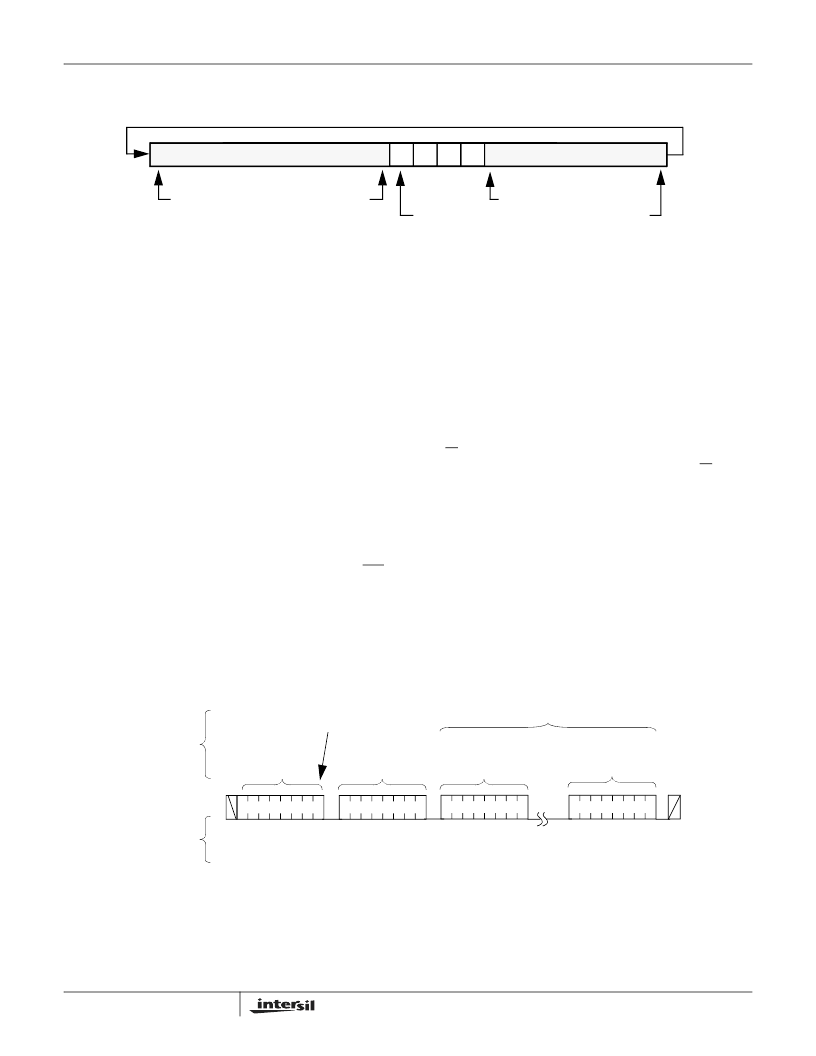- 您現(xiàn)在的位置:買賣IC網(wǎng) > PDF目錄376449 > X9530 (Intersil Corporation) Temperature Compensated Laser Diode Controller(帶溫度補(bǔ)償?shù)募す舛O管控制器) PDF資料下載
參數(shù)資料
| 型號: | X9530 |
| 廠商: | Intersil Corporation |
| 英文描述: | Temperature Compensated Laser Diode Controller(帶溫度補(bǔ)償?shù)募す舛O管控制器) |
| 中文描述: | 溫度補(bǔ)償激光二極管控制器(帶溫度補(bǔ)償?shù)募す舛O管控制器) |
| 文件頁數(shù): | 18/28頁 |
| 文件大小: | 372K |
| 代理商: | X9530 |
第1頁第2頁第3頁第4頁第5頁第6頁第7頁第8頁第9頁第10頁第11頁第12頁第13頁第14頁第15頁第16頁第17頁當(dāng)前第18頁第19頁第20頁第21頁第22頁第23頁第24頁第25頁第26頁第27頁第28頁

18
FN8211.1
November 11, 2005
The four registers Control 1 through 4, have a
nonvolatile and a volatile cell for each bit. At power-up,
the content of the nonvolatile cells is automatically
recalled and written to the volatile cells. The content of
the volatile cells controls the X9530’s functionality. If
bit NV1234 in the Control 0 register is set to “1”, a
Write operation to these registers writes to both the
volatile and nonvolatile cells. If bit NV1234 in the
Control 0 register is set to “0”, a Write operation to
these registers only writes to the volatile cells. In both
cases the newly written values effectively control the
X9530, but in the second case, those values are lost
when the part is powered down.
If bit NV1234 is set to “0”, a Byte Write operation to
Control registers 0 or 5 causes the value in the
nonvolatile cells of Control registers 1 through 4 to be
recalled into their corresponding volatile cells, as
during power-up. This doesn’t happen when the WP
pin is LOW, because Write Protection is enabled. It is
generally recommended to configure Control registers
0 and 5 before writing to Control registers 1 through 4.
When reading any of the control registers 1, 2, 3, or 4,
the Data Bytes are always the content of the
corresponding nonvolatile cells, even if bit NV1234 is
"0" (See “Control and Status Register Format”).
Read Operation
A Read operation consist of a three byte instruction
followed by one or more Data Bytes (See Figure 19).
The master initiates the operation issuing the following
sequence: a START, the Slave Address byte with the
R/W bit set to “0”, an Address Byte, a second START,
and a second Slave Address byte with the R/W bit set
to “1”. After each of the three bytes, the X9530
responds with an ACK. Then the X9530 transmits
Data Bytes as long as the master responds with an
ACK during the SCL cycle following the eigth bit of
each byte. The master terminates the read operation
(issuing a STOP condition) following the last bit of the
last Data Byte (See Figure 19).
5 bytes
7 bytes
Address=6
Address Pointer
Ends Up Here
Address=15
Address=11
Address=7
Address=0
Figure 17. Example: Writing 12 bytes to a 16-byte page starting at location 11.
Signals from
the Master
Signals from
the Slave
Signal at SDA
S
t
a
r
t
Slave
Address
Address
Byte = 81h
A
C
K
A
C
K
1
0
1
0
0
Data Byte for
Control 1
S
t
o
p
A
C
K
A
C
K
Data Byte for
Control 4
Write
1
1
0
0
0
0
0 0
Four Data Bytes
Figure 18. Writing to Control Registers 1, 2, 3, and 4
X9530
相關(guān)PDF資料 |
PDF描述 |
|---|---|
| X95840 | Quad Digital Controlled Potentiometers |
| X95840WV20I-2.7 | Quad Digital Controlled Potentiometers |
| X95840UV20I-2.7 | Quad Digital Controlled Potentiometers |
| X95840WV20IZ-2.7 | Quad Digital Controlled Potentiometers |
| X95840UV20IZ-2.7 | Quad Digital Controlled Potentiometers |
相關(guān)代理商/技術(shù)參數(shù) |
參數(shù)描述 |
|---|---|
| X9530_0511 | 制造商:INTERSIL 制造商全稱:Intersil Corporation 功能描述:Temperature Compensated Laser Diode Controller |
| X9530B15I | 制造商:XICOR 制造商全稱:Xicor Inc. 功能描述:Temperature Compensated Laser Diode Controller |
| X9530-B15I | 制造商:INTERSIL 制造商全稱:Intersil Corporation 功能描述:Temperature Compensated Laser Diode Controller |
| X9530B15I-T1 | 制造商:INTERSIL 制造商全稱:Intersil Corporation 功能描述:Temperature Compensated Laser Diode Controller |
| X9530B15I-T2 | 制造商:INTERSIL 制造商全稱:Intersil Corporation 功能描述:Temperature Compensated Laser Diode Controller |
發(fā)布緊急采購,3分鐘左右您將得到回復(fù)。